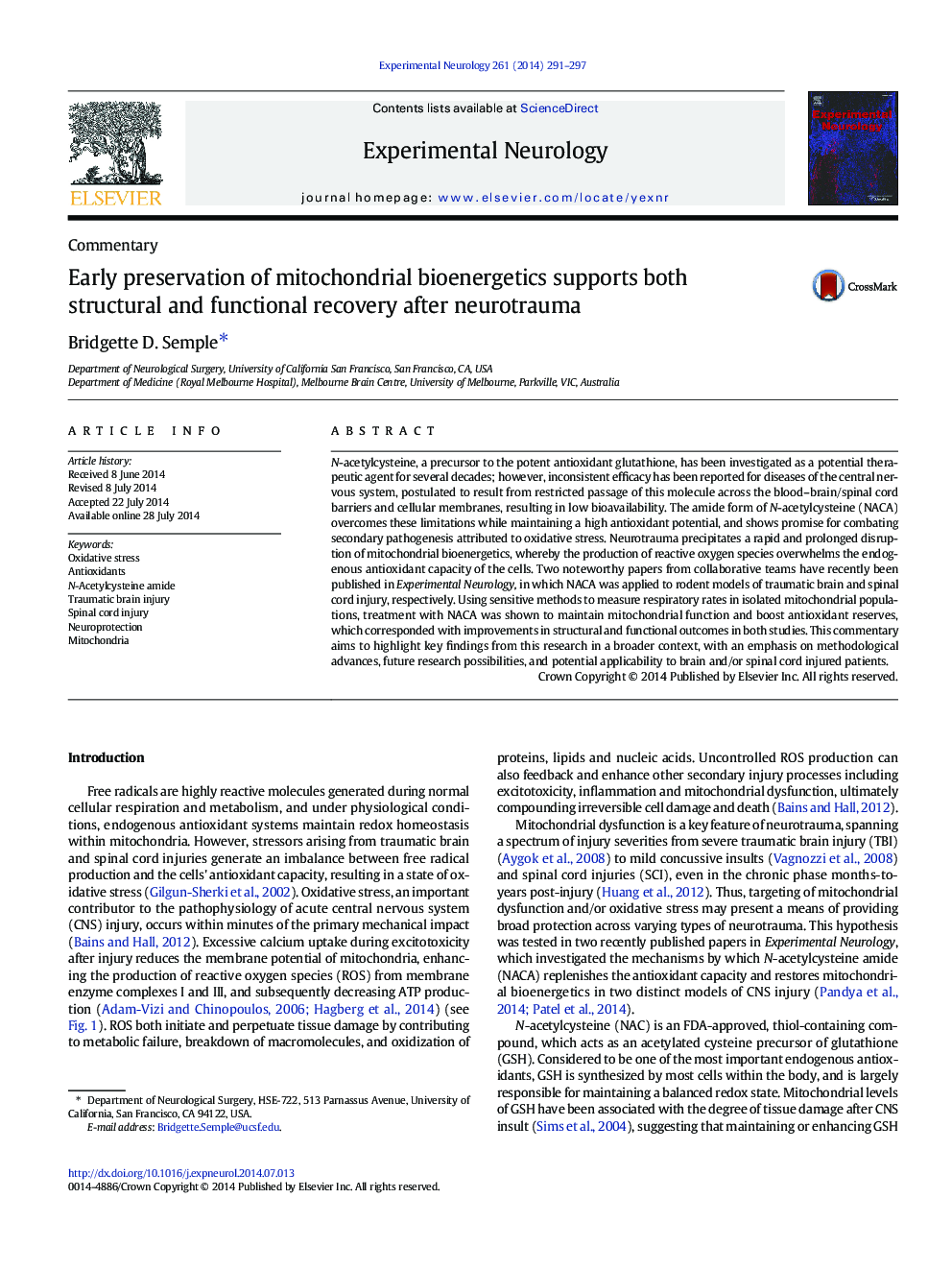| Article ID | Journal | Published Year | Pages | File Type |
|---|---|---|---|---|
| 6017571 | Experimental Neurology | 2014 | 7 Pages |
Abstract
N-acetylcysteine, a precursor to the potent antioxidant glutathione, has been investigated as a potential therapeutic agent for several decades; however, inconsistent efficacy has been reported for diseases of the central nervous system, postulated to result from restricted passage of this molecule across the blood-brain/spinal cord barriers and cellular membranes, resulting in low bioavailability. The amide form of N-acetylcysteine (NACA) overcomes these limitations while maintaining a high antioxidant potential, and shows promise for combating secondary pathogenesis attributed to oxidative stress. Neurotrauma precipitates a rapid and prolonged disruption of mitochondrial bioenergetics, whereby the production of reactive oxygen species overwhelms the endogenous antioxidant capacity of the cells. Two noteworthy papers from collaborative teams have recently been published in Experimental Neurology, in which NACA was applied to rodent models of traumatic brain and spinal cord injury, respectively. Using sensitive methods to measure respiratory rates in isolated mitochondrial populations, treatment with NACA was shown to maintain mitochondrial function and boost antioxidant reserves, which corresponded with improvements in structural and functional outcomes in both studies. This commentary aims to highlight key findings from this research in a broader context, with an emphasis on methodological advances, future research possibilities, and potential applicability to brain and/or spinal cord injured patients.
Keywords
Related Topics
Life Sciences
Neuroscience
Neurology
Authors
Bridgette D. Semple,
